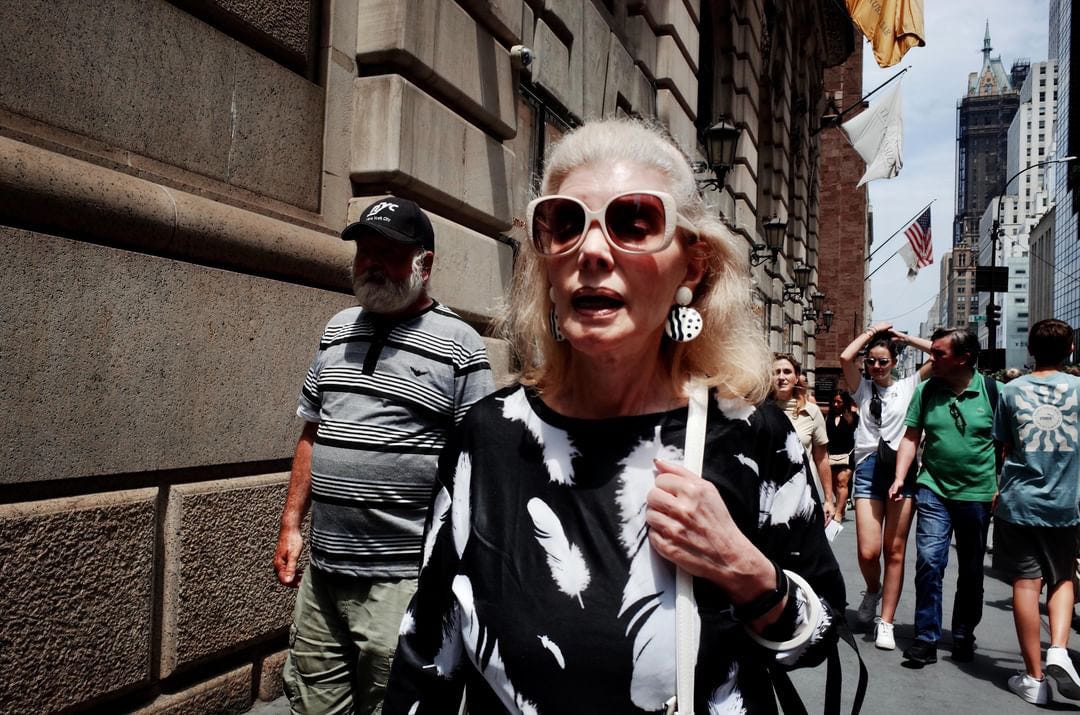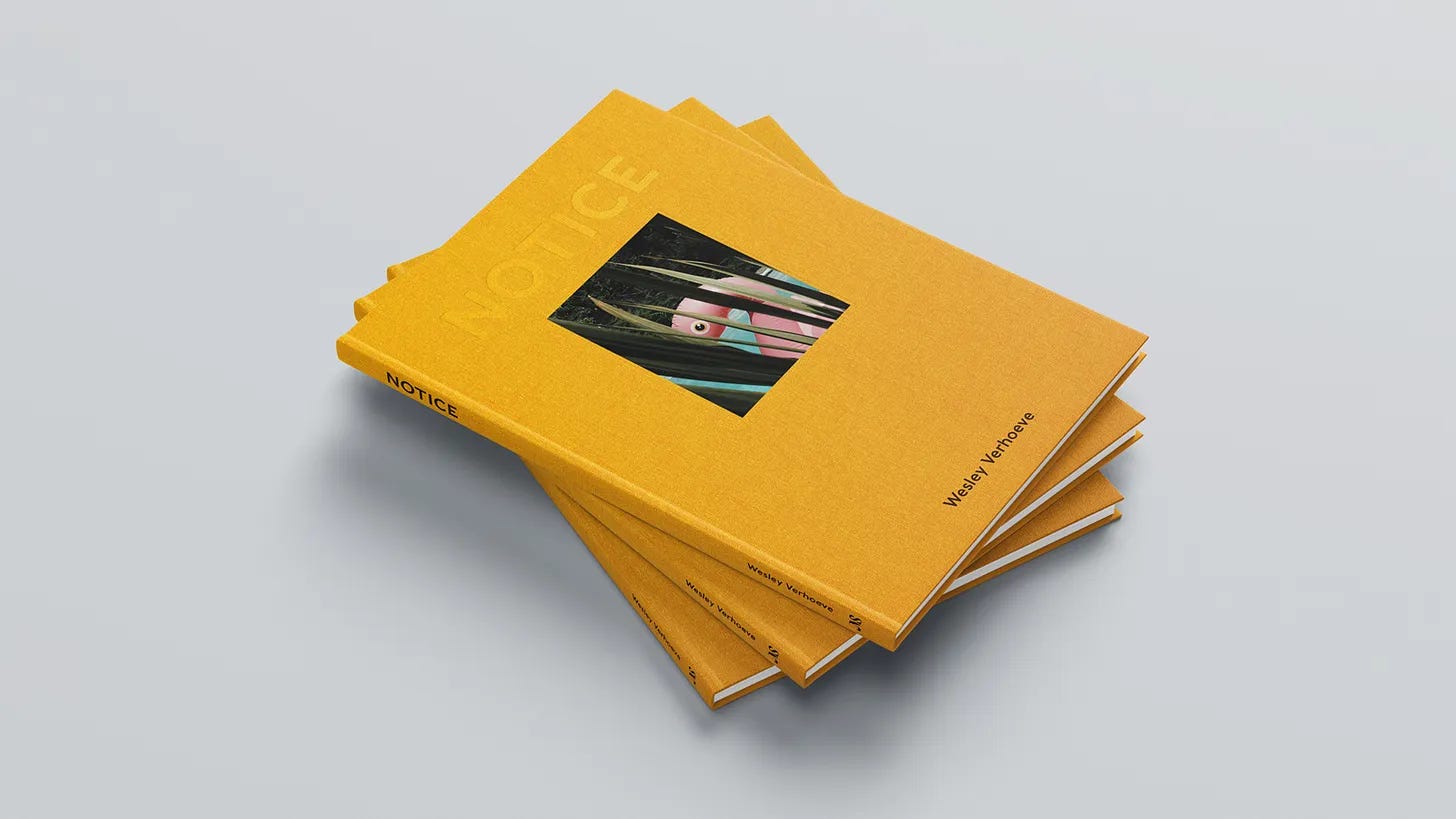112 ☼ How To Pitch A Newspaper
GIVEAWAY: Fancy Photo Candles courtesy of Photogenic Supply Co
Dear friends,
This week's letter is a conversation with my friend Dan Gaba, photo editor of the Wall Street Journal. We focused on best practices when pitching a newspaper.
Shout out to my friends at Squarespace for helping make this issue possible.
How To Pitch A Major Newspaper
I am excited to share an inspiring and informative conversation I had with Dan Gaba who is a photo editor for The Wall Street Journal. He researches photography for the homepage and WSJ app. Each morning, 3 million readers see the photos he selects to illustrate the day’s stories. Previously, Dan worked at The New York Times, where he worked with a team that won a Pulitzer Prize in 2002 for breaking news photography.
Let’s dive right in! I’ll include some snaps from various newspapers my work has appeared in to break up the text a bit. This interview was edited for length and clarity.
Wesley: As a photo editor at The Wall Street Journal, you're on the receiving end of countless pitches. What's the one thing that immediately catches your eye in a pitch? And how can aspiring photographers stand out from the crowd?
Dan: Be good, be interesting, and be interested. Being interested means that you have an idea of what I do for a living, what my newspaper covers, and even what it doesn't cover. Also be interested in the thing you'd like to cover. Be so interested in it that you can't stop telling me about it. That makes you more interesting. Make me think: "Wow, you know a lot about this interesting topic, or this topic that all of us know something about, but with this particular angle that we don't know yet."
If you really like a topic, but you don't think I'm interested in it, that's okay. Tell me about the topic that you're really interested in, and then maybe we can come together to figure out a story about it. If you're actually organically interested in something, that will come across. Your excitement about that topic is interesting to me. Let's start there, as opposed to pitching the story you think I want to hear.
Then, once you’re writing the pitch please be succinct, have a story with a beginning, middle, and an end. Start with a snappy headline and a question that you're going to answer with your work.
W: Moving on from story-based pitching, I'd like to delve into portfolio-based pitching. When presented with a story, it's easy for an editor to judge if its a fit. However, when reviewing portfolios, you’re looking at a broader body of work that requires more consideration. After seeing numerous portfolios, have you come across a particular portfolio that left a lasting impression on you? What elements do you look for that compel you to want to collaborate with a photographer?
D: I remember encountering a photographer named Poupay Jutharat. I had the opportunity to meet her during the pandemic through an online portfolio review. Her work immediately struck me. Many portfolio review participants are either beginners or searching for their artistic voice. Yet, when I saw her portfolio, I couldn't help but wonder why she was there – her work was far too exceptional. I felt like I had nothing of value to offer in return. So, I asked her about her intentions, and she mentioned she was simply looking to make contacts. My response was enthusiastic, offering my assistance because her talent was undeniable.
Her portfolio stood out for several reasons; she had a distinctive style, impeccable editing, and didn't overwhelm me with every photograph she'd ever taken. She presented a concise selection of her best work, which showcased her talent effectively. This approach was concise, visually engaging, and highlighted what she could bring to the table. I prefer to see a handful of exceptional photos rather than an extensive collection of mediocre ones. It's about quality over quantity, and starting with your best work can make a powerful impression during a portfolio review.
W: This leads perfectly into my next question. When pitching, photographers may struggle finding the right balance between showcasing our own style and showing work that we think “fits” the publication. What are your thoughts on this?
D: Please show me your style. Show me who you are through your work. I want to see your style, not a mimicry of what you assume we want. You're not a mind reader, and I don't expect you to be one. If you're uncertain about our publication's preferences, feel free to ask. But remember, I'm hiring you for your distinct perspective and skills, not for your ability to blend in seamlessly with our established aesthetic.
So, when in doubt, showcase your true self. Present the work you're passionate about, your style, even the pieces you may believe won't get you hired. Trying to tailor your portfolio to what you think I want is uninteresting because it lacks authenticity. Please, show me your genuine self, not a manufactured version of it.
There's another way of looking at this as well. Instead of sending cold emails to a big group of photo editors, which usually doesn’t get a good response rate, I recommend a more labor-intensive strategy. Visit a magazine or newspaper stand and look at physical copies of publications that you genuinely admire. Look for work that resonates with you, either because it aligns with your style or represents the kind of work you aspire to create.
Then identify the photo editors and art directors by looking at the masthead and follow them on social media. Begin with a broad list and, over time, narrow it down to a core group of individuals to follow closely. Study their work and how they collaborate with photographers. Pitch your ideas to this select group. While there's no guarantee they'll respond, these are the people you genuinely want to work with.
Pitching to them showcases your authentic style and demonstrates your alignment with their publication's vision. Instead of trying to fit a square peg into a round hole, think of yourself as a square peg in a world full of square slots, and we're the publication that's thrilled to have found you. You're already creating the kind of work we want to see. This long-term approach may not provide immediate gratification, but it's a more rewarding path that can lead to lasting success.
W: Something I’ve learned from our conversations as well, that as a photographer you're not just dropping off a package. You're working with the publication and with the photo editor. How can a photographer demonstrate a strong collaborative fit?
D: It’s helpful to come to the table with a fully fleshed-out story idea rather than a vague concept. Avoid making the editor do the heavy lifting in developing the story. It's also totally ok to pitch multiple ideas simultaneously, given that pitches should be brief, just a paragraph really.
Demonstrating knowledge of the publication and identifying whether similar stories have been covered in the past is crucial. Researching these aspects before pitching shows initiative and professionalism, which can make a significant difference in the impression you leave with the editor. A lazy or uninformed pitch can reflect poorly on your capabilities as a photographer or storyteller, so it's essential to invest time in understanding the publication's scope and previous content. Remember, your pitch is often the first impression you make, so making it a strong and informed one is vital.
A successful pitch should be concise and to the point. It should pose a question and an outline for how your pitch addresses a specific question or issue. Consider what aspect of the world or a particular topic you want to explore and why it matters. It's beneficial, especially for a publication like ours, to have a news peg or angle. A news peg is an event or occurrence in the world that sparks general interest. For instance, if the New York City Marathon is scheduled for November, pitching a marathon-related story in the weeks leading up to it would be timely and relevant. Christmas in December, or an important United Nations meeting happening in New York City, could also serve as news pegs for specific stories.
W: On a pitch level, I recently picked up something practical from you, which is the idea of including two or maybe three images directly in the email when sending a concise pitch, rather than sharing a link.
D: Absolutely, avoid the link because it makes me go hunting for information. Instead, include a couple of well-chosen images that showcase your style and the essence of your story. For instance, if you’re proposing a story about a person in your local area, but it's not a familiar figure to me, I'd recommend attaching a portrait, and picture of that individual in action, and another of the relevant location. These three photos should be captivating enough to pique my interest.
W: How multimedia elements like videos or interactive features fit into the pitch, especially considering the evolving landscape of photojournalism in the digital era.
D: Video and multimedia are very important. Video content tends to command higher advertising rates than other formats, making it important for publications. However, it's challenging to excel at both video and photography simultaneously. If you’re pitching for both, clarify how you intend to balance the two. For example, you can outline specific time blocks for video and photo shoots, demonstrating your approach to managing both effectively. Highlight moments like, "Between 9 am and 10 am, I'll focus on shooting video, while from 11 am to 2 pm, I'll capture photos." This gives me insight into your strategy. Mention how you plan to use video, for example maybe you want to capture establishing shots for a video header or creating multimedia content.
Having video capabilities is a great asset for us because, for publications like ours, mobile platforms are key. Most readers read the Journal on their phones via our app. So, visuals should be optimized for mobile viewing. If you can provide video content that complements a story, it's incredibly valuable. For instance, we might create TikTok or Instagram posts to promote a story, and your video content can be integrated seamlessly.
W: And this extra content is then compensated separately?
D: No, but it does add to the attractiveness of the photographer if they can provide that. It’s by no means a necessity, but it's a really nice bonus.
W: Lastly, I'd like to talk about your own street photography. Your weekly series is delightful, and it echoes the classic tradition of New York City street photography, capturing brief moments filled with emotion and movement. How has your personal photography journey influenced your role as a photo editor?
D: I’d say my personal photography journey plays a important role in my work as a photo editor. At the Journal, I have to align with the publication's style, which can lean a bit more conservative in terms of cropping, lighting, and the overall approach.
The great thing about my street photography is the complete freedom. I can do whatever I want with it. Sometimes, I might want to explore a more unusual style with a photographer, but I need to consider whether it aligns with the Journal's requirements. It's about picking my battles. Is this the right moment to advocate for an unconventional approach, or should I adhere to the established norms? It's a constant internal dialogue. My street photography experiences have made me more empathetic toward photographers, understanding the challenges they face in balancing creativity with practicality.
When I do assign photographers, I make the requirements clear. For example, I might specify the need for a portrait and an environmental portrait. But then, I always encourage photographers to push beyond these standard shots, to surprise me with their unique style and creativity. I want them to dazzle me and take risks. It's about combining the expected with the unexpected. Sometimes, those surprises lead to captivating and exceptional photographs that stand out.
In the end, the most important thing is to provide the images that meet the brief, but I also want photographers to express themselves and bring their distinctive style to the table. It's a delicate dance between meeting the publication's needs and fostering creative expression.
W: This was a wonderful conversation Dan. Thank you so much for your time and valuable insights. Your guidance will benefit many aspiring photographers.
D: You're very welcome. I'm glad to share my knowledge and help fellow photographers navigate this challenging field.
Takeaways
Some of Dan’s nuggets of wisdom distilled:
Be Interested — Study the publication you’re pitching, as well as the photo editor, the subject of the story. Know so much your conviction is infectious.
Be Interesting, Be Yourself — Don’t mimic what you see in the paper, but show your own point of view and how you would like to tell the story.
Be Concise — Start with a snappy headline and get right to the point, share one paragraph to garner interest rather than tell the whole story.
Include Images, But Not Too Many — Two to three max inside the email, rather than a link because that acts as a hurdle for the photo editor to see your work.
If you enjoyed this issue I’d love for you to share it with friends.
Additional Reading
Process 100 ☼ Unlocking a Milestone, My Work in the New York Times
Process 093 ☼ Picturing Your Goals
Process 083 ☼ How I Started Shooting for National Geographic Traveller
Process 060 ☼ How to Pitch Your Photography To Press and Clients
Follow Dan on Instagram at @dangaba.
Next Week: My homage and ode to street photography, a genre so dear to me.
Keep shooting and take good care of yourselves and others. <3
Wesley
If you'd like to support Process, please consider buying my photo book NOTICE. I’m super proud of it and if you enjoy this newsletter you will enjoy the book.
Gear & Tools Used
Camera: All snaps in this issue of Process were shot on my iPhone. Dan’s street photos were taken on his Ricoh GR II.
Lab: All my analog work is developed and scanned by my friends at Carmencita Film Lab. They’re my favorite lab in the world. Use code “PROCESS” to get a free upgrade.
Portfolio Site: Big shout out to Squarespace for helping make this issue of Process possible. If you need a website, I can’t recommend using Squarespace more. I have been a paying customer for more than 10 years (!!?) and it’s been so easy to build and maintain a beautiful and professional portfolio. I even added a webshop to it recently.
Check out Squarespace and use the code PROCESS10 for 10% off your first order.
Process Giveaway
This week’s giveaway comes to you courtesy of my friends at Photogenic Supply Co based in Philadelphia. One winner will receive a set of 3 Candles to create a warm and calming space for their creative space. Premium soy wax, fine fragrance oils and a cotton wick are hand-poured into a matte black glass vessels.
To enter this week’s Process Giveaway answer the question below in the comments:
QUESTION: What is your preferred platform of showing your creative work to the world?
My answer: it used to be Instagram and that platform gave me so much, and I still very much enjoy chatting with my friends on there and connecting with people, but substack has replaced it as my favorite place to share work. It’s calmer and slower and more intentional.
ENTER THIS WEEK’S GIVEAWAY before 11 a.m. EST on September 23th.
The winner will be randomly drawn. This giveaway is for Process subscribers only.












Instagram! Simply because that’s where people follow me!
I’d like to make some small run zines though, nothing compares to real printed images
Great interview. The bit about video is interesting and terrifying. Once newspapers are no longer printed and only viewed via screens, what incentive would a publisher have to continue showcasing photography, especially in the face of better ad rates on video? Altruism and love for the art are not likely to be enough.